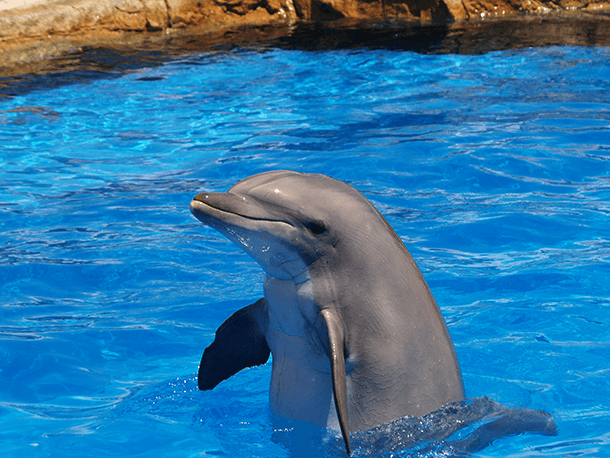Why are we fascinated with dolphins?
After a swim with dolphins in the waters of Hawaii changed her life, writer Susan Casey set off on a quest to find out more about these amazing creatures. The result is her new book, Voices in the Ocean: A Journey into the Wild and Haunting World of Dolphins.
“I was in a grief-stricken, depressed state in my life, because I had lost my father suddenly, and I hadn’t been able to shake that sadness,” Casey explains. “After I had this swim with the wild dolphins off the coast of Maui, something lifted in me. A sense of curiosity and joy crept back into my life and that had been missing for almost two years.”
So Casey started looking into the history of dolphins’ relationship to humans and discovered “just how much amazing science there was, how many amazing stories.”
Dolphins routinely keep company with boats, they’ve been conscripted by the military and they’ve found a role in animal-assisted therapy. Dolphins have helped treasure hunters locate undersea treasure and saved surfers from shark attacks — and it just goes on from there, Casey says.
Dolphins have also traveled a unique and unusual evolutionary path. They began on land as a small-hoofed wolf, and then went into the water around 55 million years ago and became a monstrous creature with big teeth and not a very big brain, Casey describes.
About 35 million years ago there was another radical physiological change: they became smaller, they developed high-frequency hearing, their brains became much larger and they started to hunt cooperatively — soon becoming the dolphins we know today.
“So dolphins have done this incredible shape-shifting,” Casey says, “and along the way, their brains developed two hemispheres just like ours, but with completely different wiring. We arrived at the same spot — we’re both air-breathing mammals with large brains and high intelligence — but along completely different itineraries…There's more than one way to be smart here on planet Earth and theirs is much more ancient than ours."
Scientists have also come to believe that some dolphins live in societies and cultures not unlike our own, Casey says. “They have communities, they have families, they learn socially like we do — so it fits the definition of cultural information being exchanged down through the generations,” Casey says.
These social organizations, called pods, even have their own dialects, which scientists believe evolved to protect against inbreeding. And dolphins have very distinct cultures throughout the world’s oceans.
In her book, Casey cites the three different ‘ethnicities’ of orcas (which are a type of dolphin) off the coast of Seattle as a prime example. “Scientists call them residents, transients and off-shores, and these three types of Orcas have about as much in common as investment bankers, rock stars, and nomadic herdsmen,” Casey says.
“These three different cultures live in close proximity to one another, but they don't have a lot to do with each other,” she explains. “And they have sort of split up their niche so that they're not at any one point depleting the food supply.”
Casey understands why the human fascination with dolphins inevitably leads to their confinement in marine parks and their appeal as entertainers, but she says when we look at a dolphin in this setting, we’re seeing a dolphin “stripped of everything that makes him a dolphin.”
“This is a dolphin who’s not using his echolocation, who’s not with his closest compatriots, who’s not able to swim 60 or 70 miles a day in the ocean, who’s not hunting fish — he’s being served dead fish,” Casey says. “We know that they’re individuals, we know they’re conscious of their surroundings. So how do you defend doing that to a dolphin?”
Aquatic zoos like SeaWorld counter that giving public exposure to these animals helps to protect them over the long run. Casey sees their point, but isn’t totally buying it.
“One of the scientists that I interviewed, Robin Baird, believes that seeing animals in aquariums and zoos sparked his career choice, so I believe there is a value to that,” she says. “But I think we could create environments that function in a much better way — if the intention really is education, as opposed to entertainment with a little bit of education thrown in.”
This story is based on an interview that aired on PRI's Living on Earth with Steve Curwood
